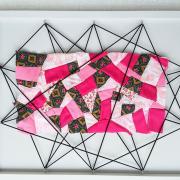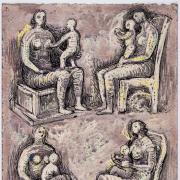Newly discovered correspondence reveals an intimate portrait of the lady with the lamp

Everyone knows Florence Nightingale as a heroic, selfless woman who devoted herself to a career of care and compassion, but what about her private life? What was she like before she picked up her iconic lamp?
A new exhibition of previously unseen correspondence and sketches at Lotherton Hall in Leeds reveals the less well-known story of a high society lady who turned her back on money, fashion and power for a life of servitude and wartime horror.
Florence enjoyed a very close bond growing up with her cousins, especially Marianne, who affectionately referred to her as Flo and whose husband, Sir Douglas Galton, later became a close advisor to Florence on hospital design.
The exhibition, Our Cousin Flo, features extraordinary never-before-seen papers, sketches and correspondence recently found at Trelissick House in Cornwall, which tell the story of the cousins’ deep relationship and the ‘visions’ that led Florence to take up nursing.

Lotherton Hall was the home of Marianne’s youngest daughter (and Florence’s god-daughter), Gwendolen Gascoigne, and was the place Marianne retreated to after the death of her husband in 1899.
Pivotal to the exhibition are key fashion pieces of the period including a day dress and evening dress similar to those that Florence and her cousins wore in sketches. While some have been kindly loaned, many are part of the permanent collection at Lotherton Hall, home of Leeds Museums & Galleries’ extensive and extraordinary collection of fashion and textiles.
The historic treasury of style includes pieces dating from the 1600s to the present day. The hall has built an enviable reputation for curating innovation fashion displays since the late 1960s, making particularly reference to contemporary British designs and items that have a local significance to Leeds and the Yorkshire region as a whole.
The exhibition space underwent a major refurbishment programme in 2014 following an award of £150,000 by the Department of Culture, Media and Sport, Wolfson Museums & Galleries’ Improvement Fund and Arts Council England.
As a result, Leeds Museums & Galleries’ dress and textiles collection is now recognised by the Arts Council’s designation scheme as a collection of national and international importance due to its sheer quality and range.
‘This exhibition offers a fascinating insight into one of British history’s most respected figures, whose compassion and selflessness have quite rightly seen her reach iconic status,’ said Councillor Judith Blake, leader of Leeds City Council.
‘It’s a real privilege for Leeds that Florence Nightingale had such strong ties to the city, and I’m sure this new material will help give visitors a fresh perspective on the character of a young woman who grew to become famous lady with the lamp.’ w
Our Cousin Flo opens March 18th and runs through until December 31st. For details, visit leeds.gov.uk



























